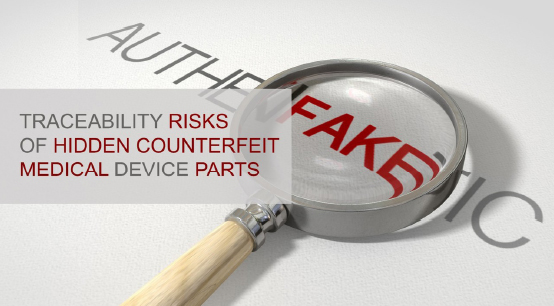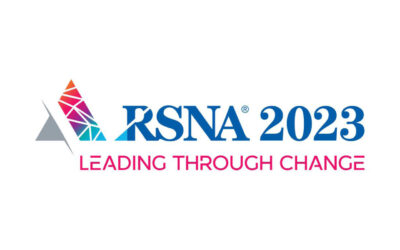 As an ultrasound and mammography equipment support organization, Summit Imaging wants to take a moment to discuss the issue of counterfeit ultrasound probes and what health care facilities need to know when acquiring or repairing equipment. We want to educate the health care community about this problem while, at the same time, lowering your total cost of ownership by maintaining high-quality equipment and reducing frequency of failure.
As an ultrasound and mammography equipment support organization, Summit Imaging wants to take a moment to discuss the issue of counterfeit ultrasound probes and what health care facilities need to know when acquiring or repairing equipment. We want to educate the health care community about this problem while, at the same time, lowering your total cost of ownership by maintaining high-quality equipment and reducing frequency of failure.
Unfortunately, health care facilities and Healthcare Technology Managers (HTMs) have been misled and sold ultrasound transducers that contain counterfeit parts.
From discussions with our health care facility customers, we have heard that some transducers are represented as coming from original equipment manufacturers (OEMs) or are allegedly refitted with counterfeit parts that, some suppliers claim, meet OEM specifications; yet, that is not actually the case. The primary concern is that these transducers are being repaired with low-quality counterfeit parts that have not undergone proper testing and certification.
Proper validation would include a 510(k) issued by the FDA, or other external certifications, to prove that the performance and safety matches current regulations of components for each application of the re-manufactured part in every model of transducer in which it may be installed.
This burden of proof lies with the re-manufacturer, the supplier transplanting the low-quality counterfeit parts inside OEM marked casings and any organization that takes ownership of the asset and resells it to health care facilities. We urge health care facilities to ask these critical questions of ultrasound suppliers as these significantly and unnecessarily increase operating and patient safety risks.

This situation occurs when ultrasound suppliers purchase low-quality, counterfeit ultrasound transducers, or certain counterfeit parts of the transducers, from offshore re-manufacturers. The ultrasound suppliers utilize the low-quality internal parts and transplant the critical internal components into a defective OEM transducer (or other medical device) that displays the original OEM serial numbers and labeling. This masks the low-quality and non-validated re-manufactured parts on the inside of the “finished” transducer, resulting in a compromised medical device. The health care facility now unknowingly owns an asset that carries seemingly valid OEM serial numbers and labeling, yet has the internal structure of a counterfeit transducer that does not meet federal regulations. The worst part of the situation is that the equipment is used on unsuspecting patients who are assuming that they are receiving the best care possible.
Traceability and recalls have now become an extraordinarily difficult exercise for transducers with compromised components, something a health care facility would never be aware of as they are inside sealed casings. Making a valid investigation almost impossible.
Adding another layer to the problem are the ultrasound suppliers who transplant counterfeit parts into OEM-labeled casings and sell these products to other ultrasound suppliers, without any disclosure of the improperly re-manufactured parts used inside the ultrasound probe. Then, these ultrasound suppliers unknowingly sell the equipment to others in the market or directly to a health care facility, and nobody along the transaction chain has any insight into the compromised medical device that is now owned by the health care facility. These are being reported by end users as low-quality products that have a significant higher frequency of failure and this significantly increases total costs of ownership and risks for health care facilities and patients.

Sonography Professor Carolyn Coffin, who has performed research on image quality and ergonomics of ultrasound equipment, says, “When it comes to imaging, quality, longevity, safety, and overall functionality, the original parts of a transducer are far superior to those of an improperly re-manufactured product. But cheap, imitation components are easy to pass along to you when they’re housed in original casing and you cannot see them. This is why it’s so important to ask questions, and vet your ultrasound suppliers to make sure [that] you’re getting the quality you’re paying for.”
Health care facilities can best protect themselves from this practice by searching for suppliers with an ISO 13485 certified Quality Management System that has been designed to reveal these counterfeit components during transducer evaluations and repairs. Only then can the supplier notify the health care facility of the findings, allowing them to make an informed decision of what to do with the compromised transducer. In our experience, health care providers universally reject the counterfeit equipment for all of the reasons previously described and more. After learning about these practices, health care facilities consider it a gross disregard of current FDA regulations to repair and sell improperly remanufactured equipment that lack a 510(k) or external safety and performance certifications. This situation is directly opposed to how you and your health care facility intend to use the equipment and creates unnecessary risk to your organization and the patient.
A more comprehensive discussion can be found on our YouTube channel along with many more informative topics.
– Larry Nguyen is the CEO and CTO of Summit Imaging.



![[Sponsored] Counterfeit Ultrasound Device Traceability Risks for Health Care Facilities](https://theicecommunity.com/wp-content/uploads/2019/03/summit1.jpg)




